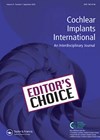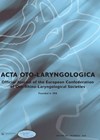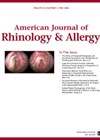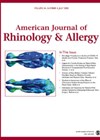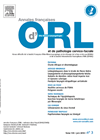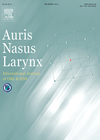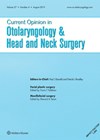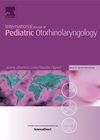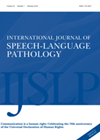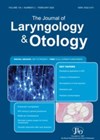
Journal Reviews archive for September 2020
Dead regions in patients with cochlear implants
The very nature of a dead region (DR) in a cochlea means that they are often found in patients who are eligible for cochlear implants. However, a variety of different hearing configurations are found in those with DRs because of...
Horizontal canal PPV: is Gufoni manoeuvre better than barbecue manoeuvre?
Benign paroxysmal positional vertigo (BPPV) is the most common kind of vertigo that we come across in our out-patient clinic. Horizontal canal BPPV (HC-BPPV) accounts for 10–30% of total BPPV. Two techniques, namely Guffoni and barbecue roll manoeuvres, are generally...
Quality of life in children following balloon Eustachian tuboplasty
This study aimed to demonstrate the efficacy of balloon Eustachian tuboplasty (BET) in children by assessing their quality of life with the Otitis Media-6 questionnaire (OM-6). The OM-6 questionnaire is the most frequently used instrument to measure health-related quality of...
Potential benefits of turbinate sparing medial maxillectomy
Whilst endoscopic medial maxillectomy (EMM) has good results as the standard treatment option for tumours arising in the maxillary sinus, postoperative problems of crusting, epiphora and paraesthesia are not uncommon. This paper looks at modified EMM aimed at sparing the...
How much does CRS affect Eustachian tube dysfunction symptoms?
We know that chronic rhinosinusitis (CRS) and Eustachian tube dysfunction (ETD) are both very common, and that the two often co-exist but this paper looks to establish the prevalence and severity of ETD in CRS patients, and how much treatment...
The septum and breathing
The authors compared the improvement in nasal obstructive symptoms in two groups of patients. One group underwent septoplasty alone and the other septoplasty accompanied with compensatory turbinoplasty. They used the Nasal Obstruction Symptom Evaluation (NOSE) [12] and visual analog scale...
Surgical outcomes of myringoplasty using platelet-rich plasma
Tympanic membrane (TM) perforations can affect people’s quality of life due to recurrent infections. Management is often by surgical repair. In this study, the authors investigated the outcomes of a minimally invasive approach of patch myringoplasty using an atelocollagen sponge...
Enhanced recovery following surgery for head and neck cancer – the current evidence
Enhanced recovery after surgery (ERAS) programmes are now well established in many surgical specialities as a means of reducing postoperative complications and length of stay in hospital. Whilst many head and neck teams have interventions used to aid postoperative recovery,...
Intranasal steroids in COVID-19
COVID-19 in patients with allergic conditions does not seem to take more severe course. The Global Initiative for Asthma recommended that asthmatic patients who are on prescribed inhaled or oral steroids should continue to take them. Contradictions between guidelines in...
OSA – do the parents know best?
The difficulty in using the history and examination to determine the severity of sleep disordered breathing in children is well established. The relative prevalence of sleep disordered breathing symptoms in children, and the relative paucity of capacity and restrictive cost...
Remembering how to speak
Reminiscence therapy (RT) is an approach that provides people with dementia opportunities to recount nostalgic memories and access thoughts for communication. It is one of the most commonly used therapies in aged care settings. The aim of RT is to...
Two reliable endoscopic myringoplasty techniques for anterior tympanic membrane perforations
Difficulties that arise in closing anterior perforations in the tympanic membrane are due to a narrow isthmus of the external auditory canal and an anterior wall bulge which obscures the most anterior part of the tympanic membrane. The conventional microscopic...

